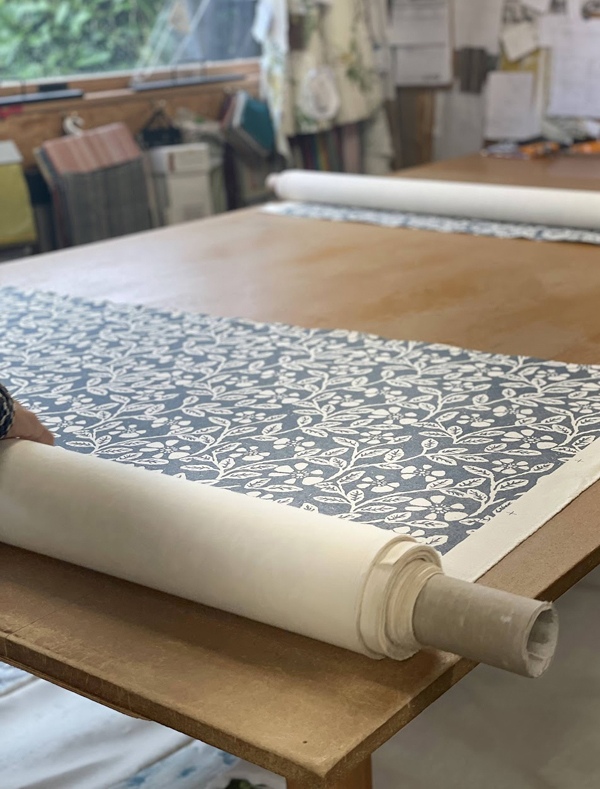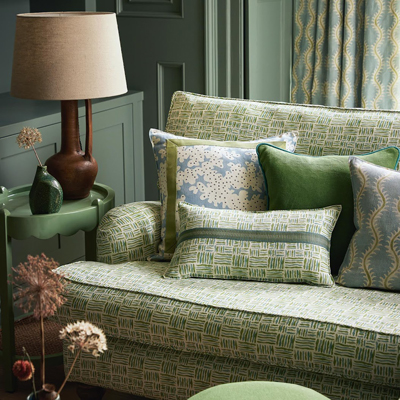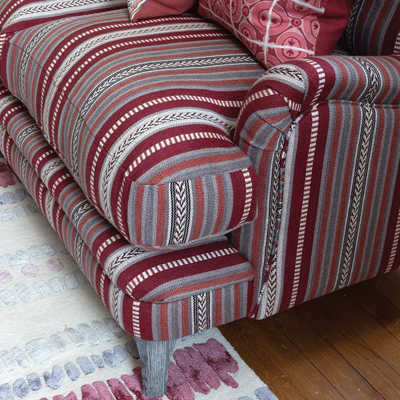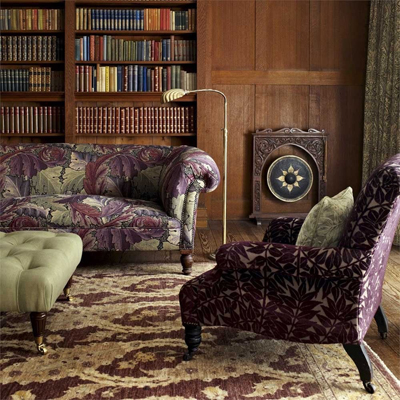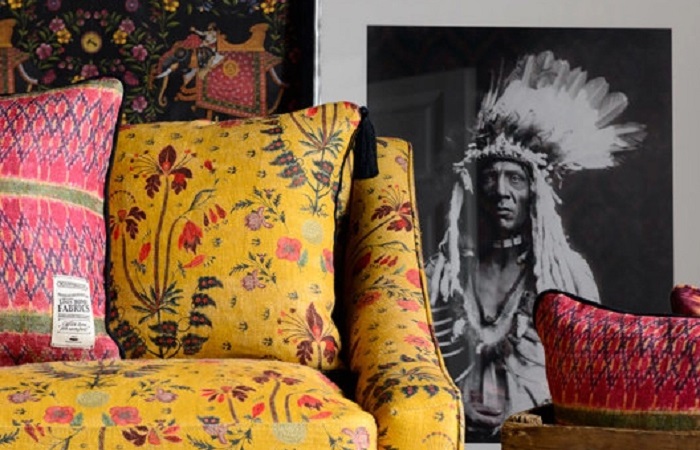How to Choose Upholstery Fabric
2nd November 2023Choosing your upholstery fabric is a very enjoyable part of the furniture buying process, and there are endless options in terms of design, colour and material. Each type of upholstery fabric has unique attributes that must be considered depending on your lifestyle and home. Ask yourself the following questions when choosing, to ensure you end up with the right type for you…
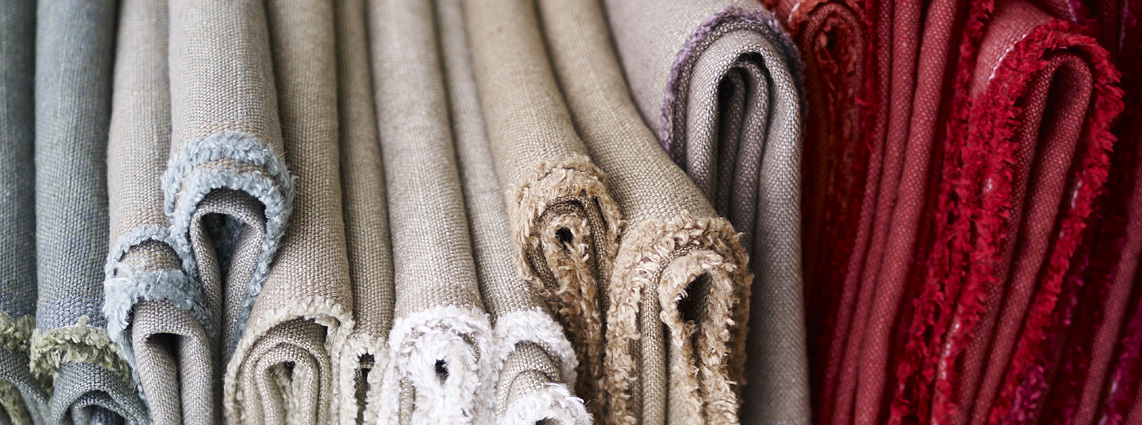

How durable do you need the fabric to be?
Think about how your upholstered pieces are used in your home, you will have different requirements in a family sitting room compared to a formal dining room.
Designer sofas, armchairs, and footstools, receiving only moderate amounts of wear are fine with less hard wearing fabrics. However, pieces subjected to daily heavy wear need to be covered in tough, tightly woven fabric which will last longer than more delicate ones. The higher the thread count, the more tightly woven the fabric is, and the better it will wear.
Look at the rub test
The best way to determine a fabric’s resistance to wear is by looking at its rub test. The most common form of rub test carried out in the UK is the Martindale Test; whereby the fabric is placed in a machine which pulls it taut and then rubs a small area until two yarns break. The fabric is then assigned a number – the higher the number, the more ‘rubs’ the fabric can withstand before it shows signs of wear.
Where available, we display the rub test for all the fabrics we sell on our website, but if you cannot see the number, do get in touch with us and we may be able to find out for you or advise on the fabric’s usage. As a rough guide...
Decorative (less than 15,000 rubs)
Recommended for items which will be purely decorative (e.g. cushions, accents, lampshades).
Light Domestic (15,000 to 20,000 rubs)
For use on items that will only be used occasionally (e.g. dining chairs, hallway benches) or for curtains and blinds. This will either be due to the construction of the fabric or it’s embellishments (embroidery fabrics will always be light domestic).
General Domestic (20,000 to 35,000)
Fabrics suitable for general domestic usage can be applied to every day furniture, accents, curtains, blinds and other soft furnishings. They cannot withstand especially high levels of stress but will be more than sufficient for typical day-to-day wear.
Heavy Duty (35,000 to 50,000 rubs)
Heavy duty fabrics are will have a particularly strong constructions, suitable for high traffic areas and light commercial purposes (e.g. a sofa in a waiting room, your favourite armchair etc.)
Commercial Grade (50,000 plus)
These fabrics are suitable for heavy duty commercial and domestic applications. They are likely to be sought out by companies or venues experiencing extremely high volumes of traffic, where the fabric will need to withstand almost constant use.
What ‘look’ are you going for?
The type of fabric you choose will have a huge impact on the overall look of your furniture piece. Each type of fabric will bring different qualities to a room; the most popular choices are:
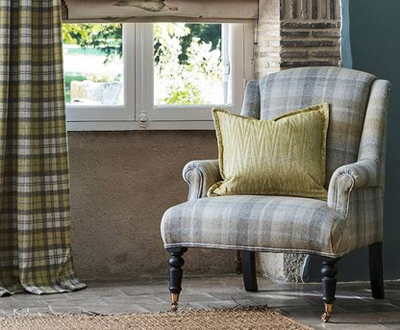

Natural fabrics
Fabrics made from natural fibres are incredibly popular for upholstery due to their versatility.
Fine silks, whilst beautiful and luxurious, are extremely delicate working best in a more decorative capacity as they would not withstand the high level of usage required for a daily family room.
But could be used on delicate antique chairs, show pieces that are not to be sat on! Wools, woven cottons, and linens are ideal for busy family living offering both style and durability.
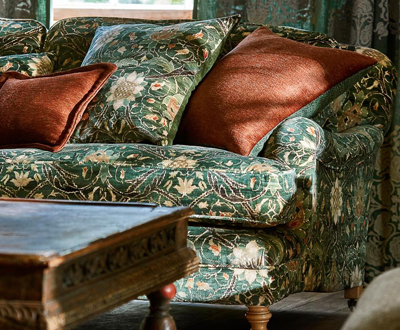

Velvets and Chenilles
Velvets are very popular at the moment and many have the addition of polyester to make them more durable and hard wearing.
They are prefect in a more formal setting and look elegant and inviting. Chenilles are a good alternative to velvet, as it has the softness of velvet but can be woven into many designs and is also hard wearing.
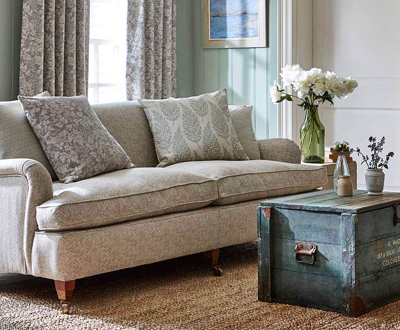

Synthetic Fabrics
Synthetic fabrics have been developed as an alternative to natural fibres as they offer increased longevity and durability. They are often blended with natural fibres to achieve the best properties of each.
Polyester and nylon are dirt resistant, more cleanable and are the fabrics most often blended with natural fibres to soften their feel. Polyester stands up well to sunlight, whereas nylon is more sensitive.
Olefin is an outdoor fabric suitable for heavy wear; it is abrasion, stain, sunlight and chemical resistant.
Rayon is used as an imitation silk, linen or cotton and is typically blended to provide longevity for these more delicate fabrics.
What designs and colours do you like?
Complement your furniture’s style
We have thousands of upholstery designs in a multitude of colours from which to select the perfect fabric to compliment your home and the furniture it is being used on. Typically, upholstery fabric should reflect the style and character of the piece it is covering, so a traditional fabric would look better on a traditional style of frame, for example.
However, don’t let that limit you, more contemporary designs can often work well with traditional pieces and reflect a more adventurous sense of style.
Echo your home’s existing style or theme
Just as you should consider the style of your chosen furniture piece, so too should you think about the room in which it’s going to sit. Formal fabric designs such as damasks and narrow stripes are suited to formal homes, whereas geometric designs and neutral colourways create a more casual laid back look.
Consider pattern scale
If you opt for a pattern or print, scale is an important consideration. It needs to be suitable for the furniture piece being covered and the room it will live in. More often than not, a large bold pattern will work better in a larger room, while a more muted or smaller design is a better choice for a smaller space.
Match the colour to your requirements
Colour is usually is the first thing decided upon when choosing an upholstery fabric and it is important to make sure you choose one that will stand the test of time, suit your lifestyle and compliment your existing decor. Light, delicate colours are less suited to children and pets, for example.
Final tip:
The key to choosing a fabric is to think about longevity and what will transcend other interior trends you may want to implement over time. Upholstering a piece of furniture is a significant investment and choosing a practical, hardwearing fabric with an aesthetically pleasing design should ensure your investment lasts as long as possible.
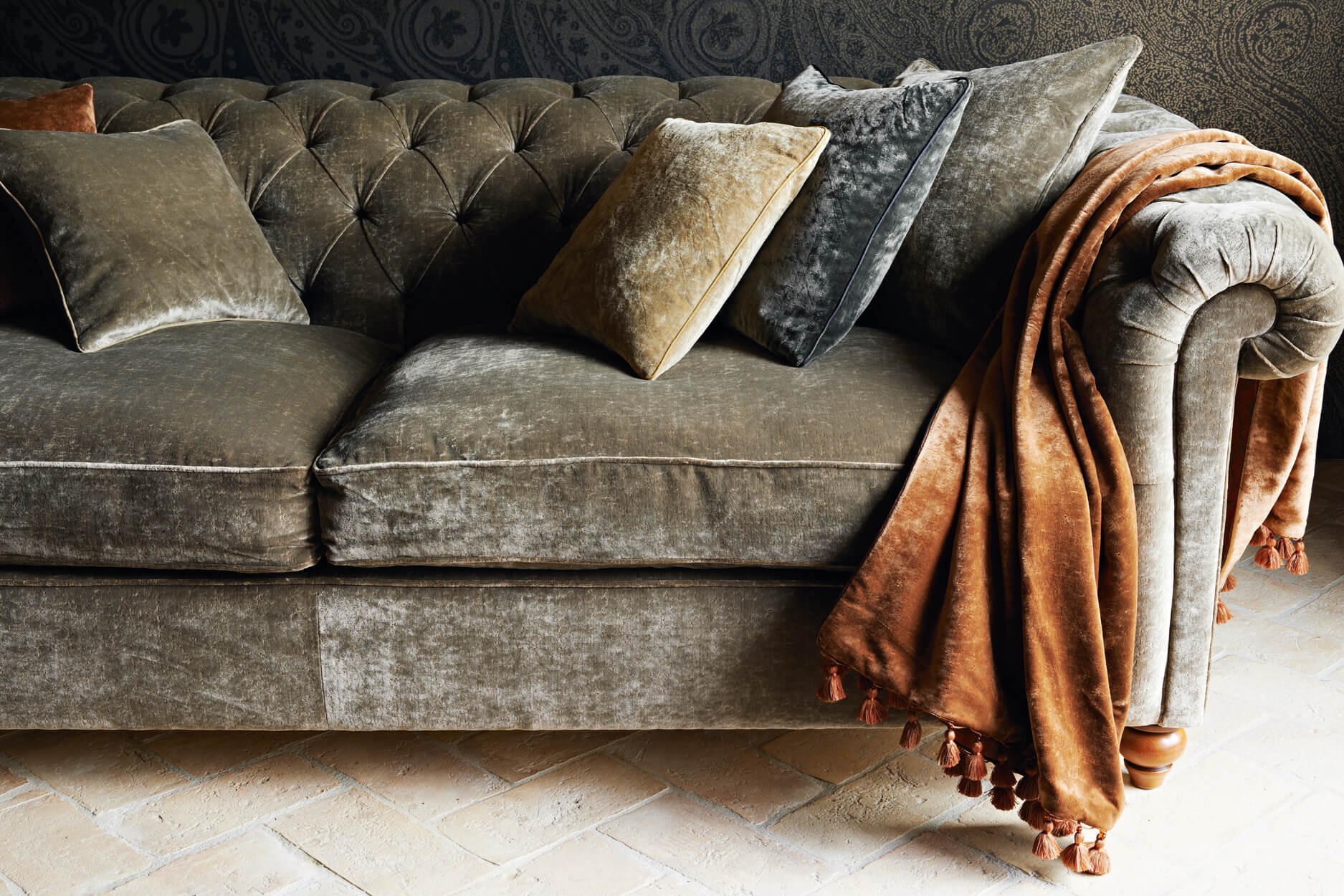

You Might Also Enjoy Reading...
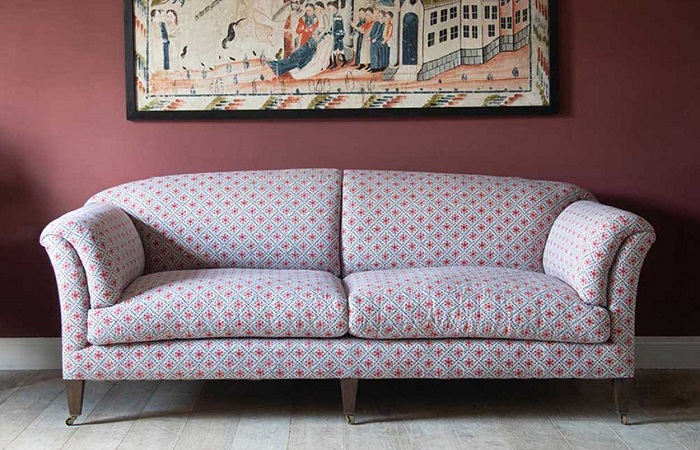

How to Use Small Scale Designs in Your Home
You can feature small design fabrics and wallpapers in every room of the house by utilizing their compact scale to temper larger motifs or accentuate key pieces within the room. Read our guide to find out how...
- paypal
- visa
- mastercard
- amex

